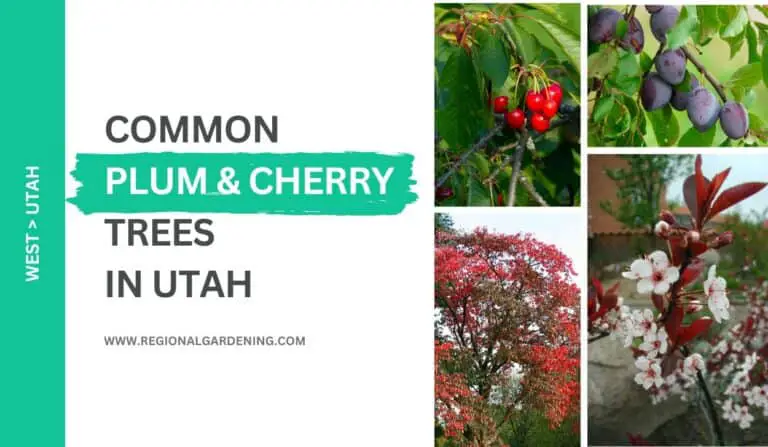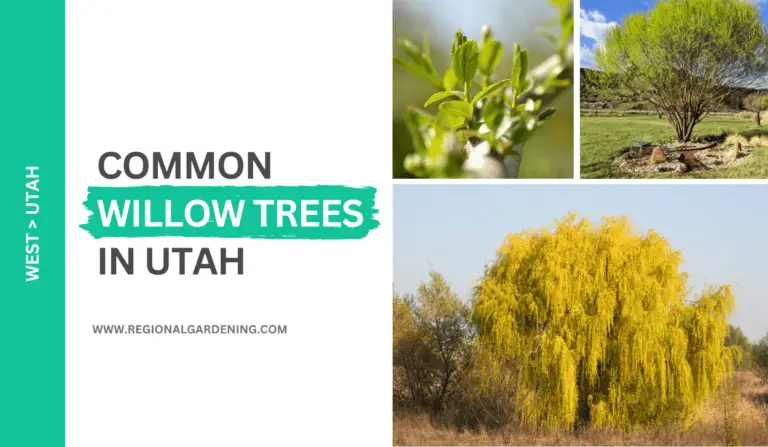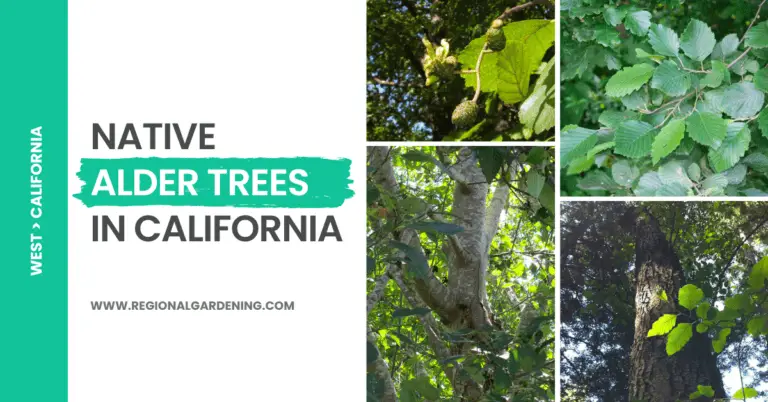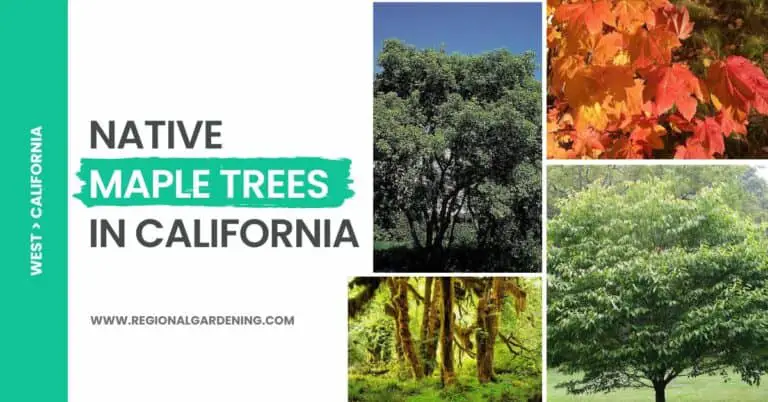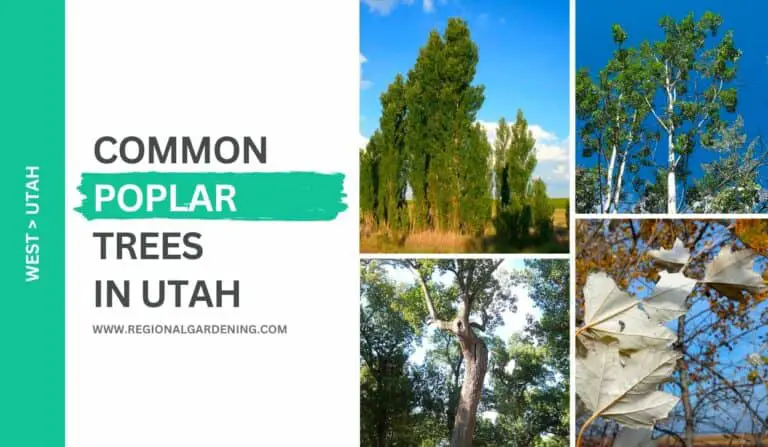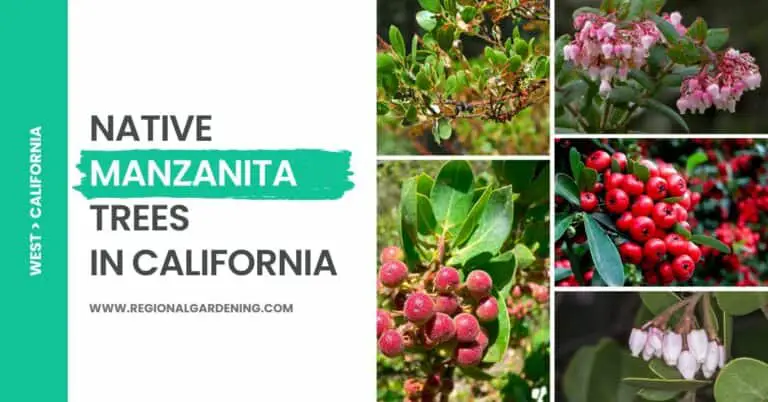Common Pear Trees In Utah (3 Types You Can Easily Grow)
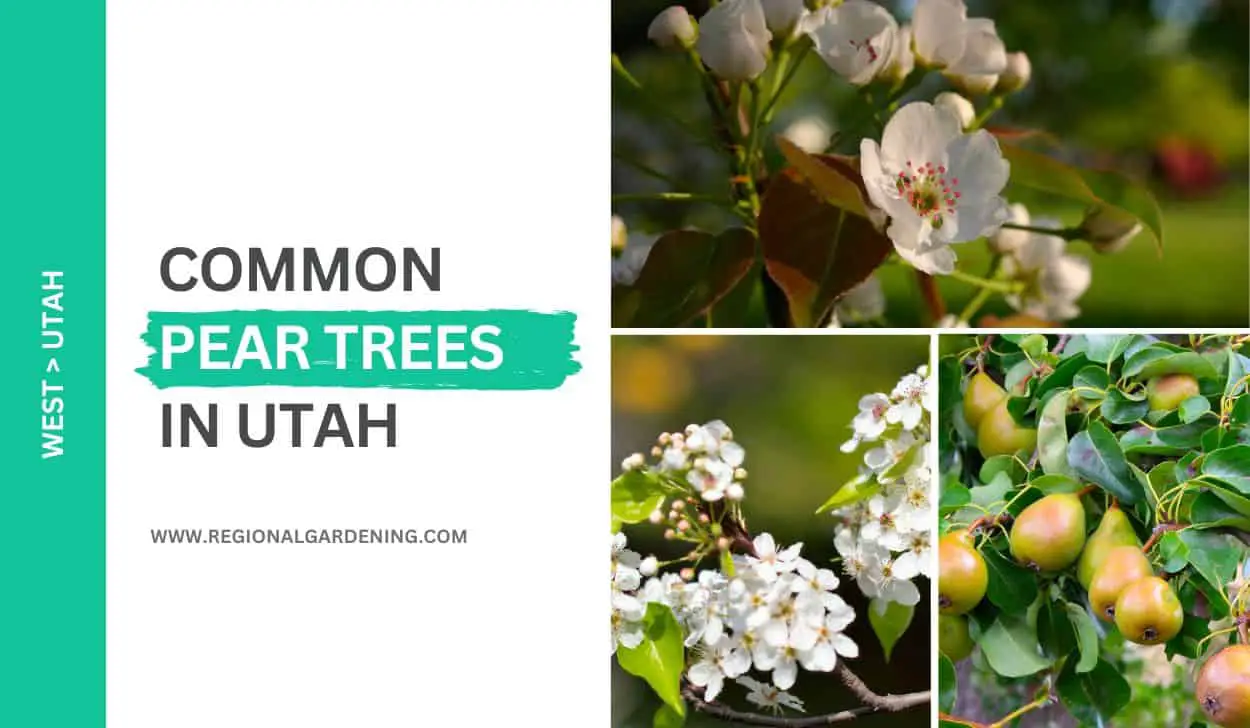
Pear trees in Utah have become a beloved sight across the state, cherished for their beauty and versatility. Utah’s distinct climate and landscapes have fostered the growth of numerous pear tree varieties.
Despite being a non-native species, pear trees have found a home in Utah’s diverse environments, from urban parks to backyard orchards.
In this article, I will take you on a tour of the world of pear trees in Utah, examining their enticing characteristics, preferred growing conditions, and widespread distribution.
So, let’s begin.
1. Common Pear
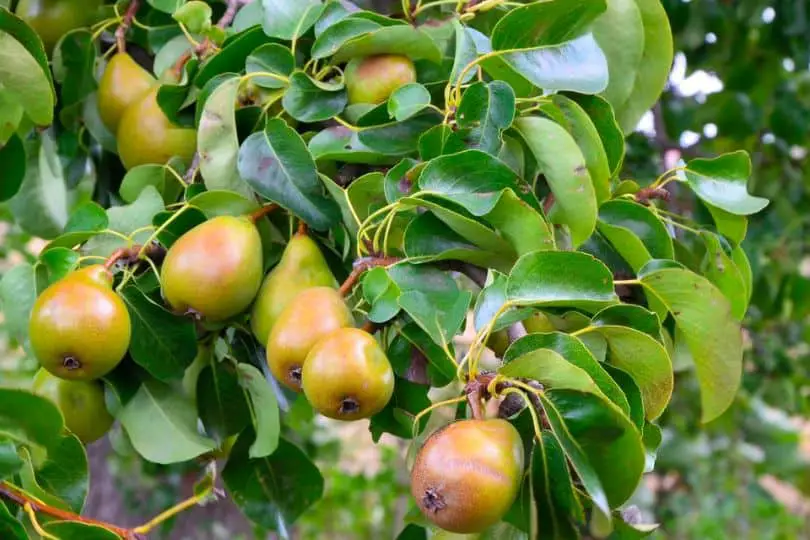
- Common Name: Common Pear
- Scientific Name: Pyrus communis
- Mature Height: 30-40 feet
- Native/Non-Native: Non-Native
- Flowers/Cones: Clusters of white flowers; edible fruit called pears
- Uses: Culinary purposes, ornamental purposes in landscaping
Common Pear is one of the most frequently planted pear trees in Utah gardens. It is a very popular fruit-bearing tree that is frequently cultivated for its tasty pears.
It is a medium-sized tree that grows to a height of 30 to 40 feet. The Common Pear tree has a rounded crown with open, spreading limbs.
The Common Pear tree’s leaves are glossy and oval-shaped, with a dark green tint. The tree produces clusters of white flowers in the spring, which attract bees and other pollinators. These blossoms give way to the fruit of the tree, which is the well-known pears. Depending on the cultivar, pears come in a range of shapes, sizes, and colors.
The Common Pear tree is not indigenous to North America, but it has been cultivated in many parts of the world. It is widely regarded for its edible fruit, which can be eaten fresh, baked, canned, or used to make preserves. The tree is also commonly planted for its ornamental value, as it has an attractive form and produces gorgeous blooms in the spring.
The Common Pear tree prefers well-drained soil and full sunlight for cultivation. It may grow in a variety of soil types, but it flourishes in fertile soil. The tree requires little care and can be pruned to keep its shape and promote healthy growth.
Additionally, the Common Pear tree is a versatile and appealing addition to any landscape. It is a favorite option among gardeners and orchard owners due to its tasty fruit, lovely blossoms, and ornamental appeal.
The Common Pear tree is a good option to consider if you want to enjoy fresh pears or improve the beauty of your yard.
2. Callery Pear

- Common Name: Callery Pear
- Scientific Name: Pyrus calleryana
- Mature Height: 30-50 feet
- Native/Non-Native: Non-Native
- Flowers/Cones: Showy white flowers; rounded fruit called pomes
- Uses: Ornamental purposes in landscaping
The Callery Pear tree brings a touch of elegance to any garden. It’s a medium-sized tree with a maximum height of 50 feet.
The dark green leaves of the Callery Pear tree transform into shades of orange, yellow, red, and purple in the fall. The tree’s bark is smooth and grayish brown, while the twigs and buds are wooly and brownish green.
Although it originated in China, the Callery Pear tree is now commonly grown in the United States. Its white, spectacular flowers in the spring and vibrant autumn foliage are two of its most recognizable features. But its size, vulnerability to winter death, and the unpleasant odor its blossoms give off are all negatives.
The Callery Pear tree is imperfect but beautiful in any garden. It’s resilient and can thrive in high-pH soil. It requires full sunlight and cannot survive in partial shade.
Despite its unpleasant odor, it is one of the most commonly planted pear trees in Utah gardens for landscaping because of its attractive appearance and useful shade.
3. Ussurian Pear
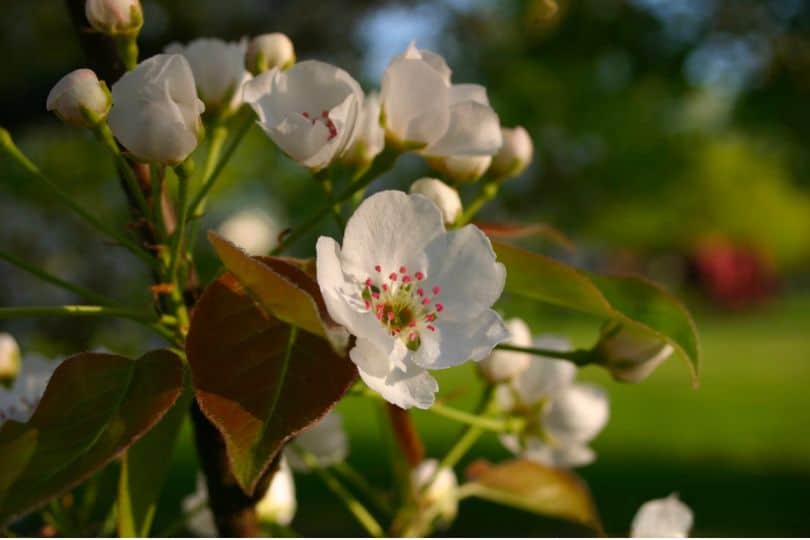
- Common Name: Ussurian Pear
- Scientific Name: Pyrus ussuriensis
- Mature Height: 20-40 feet
- Native/Non-Native: Native to Eastern Asia
- Flowers/Cones: Clusters of white flowers; small, round fruit called pears
- Uses: Ornamental purposes, wildlife habitat
Among the three common pear trees in Utah, Ussurian Pear is the least common one. It is a medium-sized tree deciduous tree native that grows to a height of 20 to 40 feet. The crown of the Ussurian Pear tree is erect and rounded, and its branches stretch out gently.
The oval-shaped leaves of the Ussurian Pear tree are lustrous dark green in hue. The tree produces clusters of little white blooms in the spring, which attract bees and other pollinators. These blossoms give way to the fruit of the tree, which is a tiny, spherical pear.
Pears from this tree are not commonly used in cooking due to their astringent and gritty texture, but they are enjoyed by wildlife such as birds and small mammals.
The ornamental appeal of the Ussurian Pear tree is highly valued. It has a lovely shape and excellent foliage, making it a popular choice for landscaping. The tree is also resistant to diseases and pests, making it a tough and low-maintenance choice for gardens and parks.
The Ussurian Pear tree demands well-drained soil and full sunlight for cultivation. It may grow in a variety of soil types, including clay and sandy soils. The tree is tolerant to a wide range of temperatures, including frigid locations, and is well-known for its capacity to resist hard winter conditions.
Aside from its aesthetic value, the Ussurian Pear tree supplies wildlife habitat and food. The flowers attract pollinators, while the fruit provides food for birds and animals. As a result, it is an excellent complement to natural settings and wildlife gardens.
Common Pear Trees In Utah – Frequently Asked Questions(FAQs)
This section contains some of the most commonly asked questions related to pear trees in Utah. These questions were taken from internet forums and threads where beginner gardeners and nature enthusiasts hang out.
Are there pear trees in Utah?
Yes, there are pear trees in Utah. While the climate in Utah can be difficult for some fruit trees, such as some pear varieties, some cultivars are well-suited to the state’s conditions. Pear trees can thrive in certain areas of Utah with proper selection and care. It is critical to select pear tree varieties that are suited to Utah’s climate, especially those that are cold-hardy and can withstand the region’s temperature fluctuations. Local nurseries and gardening experts can advise you on the best pear tree cultivars for your specific location in Utah.
The varieties that thrive in Utah’s climate include Common Pear, Callery Pear, and Ussurian Pear. However, none of these are native to the state.
Is the common pear native to Utah?
No, the common pear is not native to Utah. None of the commonly found pear trees in Utah are native to the state. Farmers and gardeners have grown them here and brought them mostly from elsewhere.
What are the uses of pear trees in Utah?
Pear trees in Utah are used for a variety of purposes, primarily landscaping and fruit production. With their attractive foliage, delicate blossoms, and sometimes vibrant fall colors, ornamental trees improve the aesthetic appeal of gardens, parks, and residential areas. Pear trees also provide shade during the hot summers in Utah, creating a pleasant outdoor environment. They also provide homeowners and local orchards with the opportunity to grow their own fresh and flavorful pears. These fruits can be eaten fresh, used in cooking and baking, or stored for later use.
Similar Articles
- Common Oak Trees In Utah
- Common Pine Trees In Utah
- Common Mulberry Trees In Utah
- Common Cedar Trees In Utah
- Common Magnolia Trees In Utah
- Common Ash Trees In Utah
- Common Spruce Trees In Utah
- Common Elm Trees In Utah
- Common Birch Trees In Utah
- Common Poplar Trees In Utah
- Common Maple Trees In Utah
- Common Dogwood Trees In Utah
- Common Willow Trees In Utah
- Common Alder Trees In Utah
- Common Cypress Trees In Utah
- Common Beech Trees In Utah
- Common Juniper Trees In Utah
- Common Fir Trees In Utah
- Common Plum & Cherry Trees In Utah
- Common Palm Trees In Utah
Sources
The Regional Gardening team makes sure that the information in our articles is accurate by only using sources that are known to be trustworthy. Some of these sources are peer-reviewed journals from government agencies, well-known universities, and scientific research organizations.
- Trees & Shrubs In Yard And Garden, Utah State University Extension
- Native & Non-Native Tree Identification, Utah State University Forestry Extension.
- Native Plants, Utah Native Plant Society.
- A Guide To The Trees Of Utah & Intermountain West, Book By Michael Kuhns, Utah State University Press.


